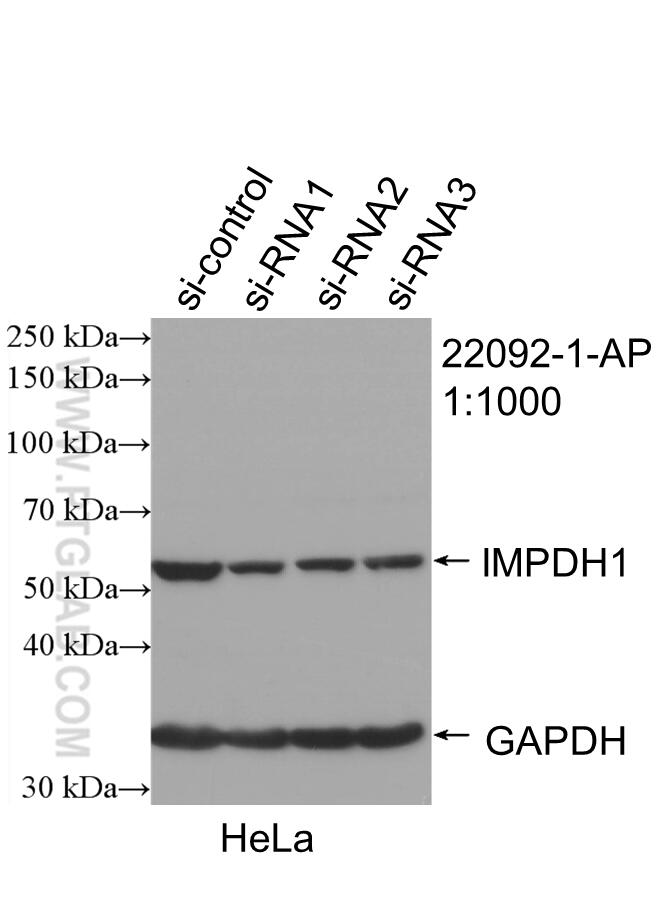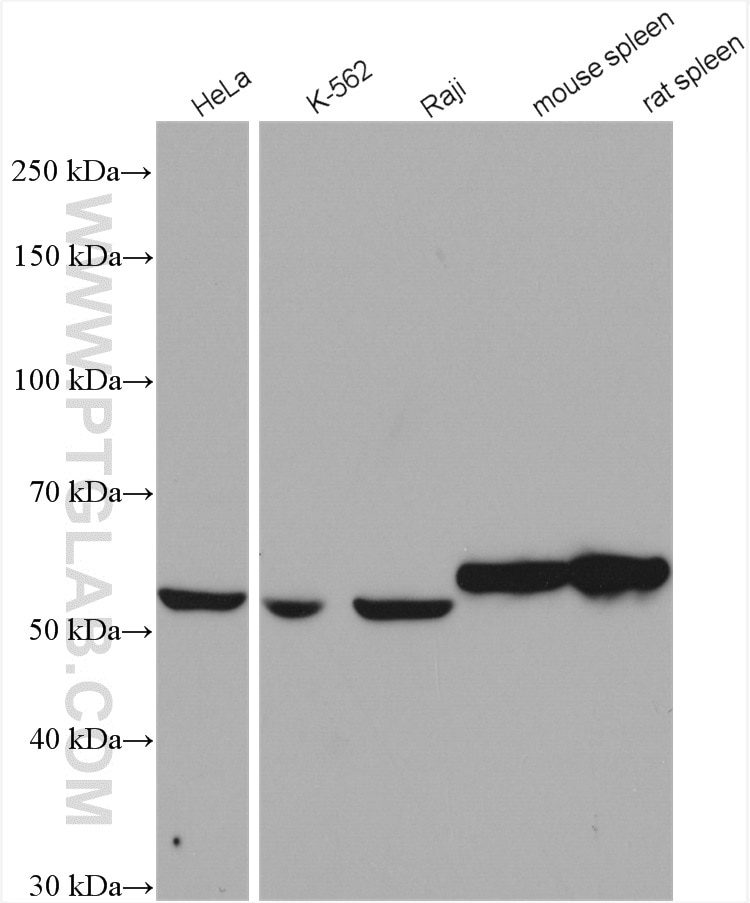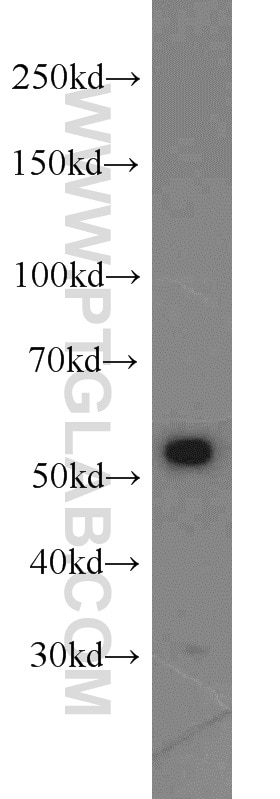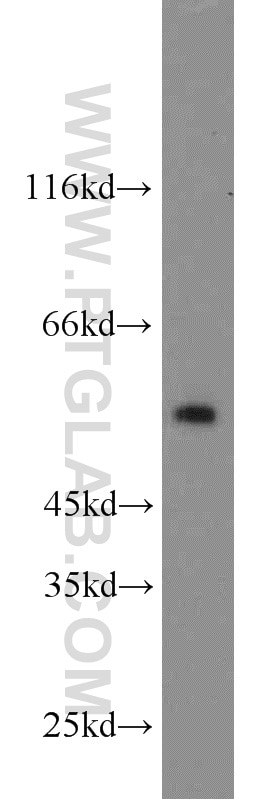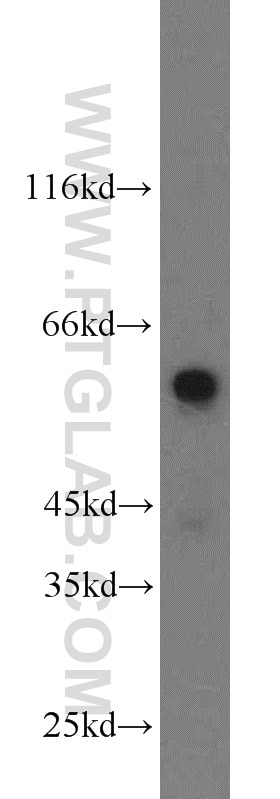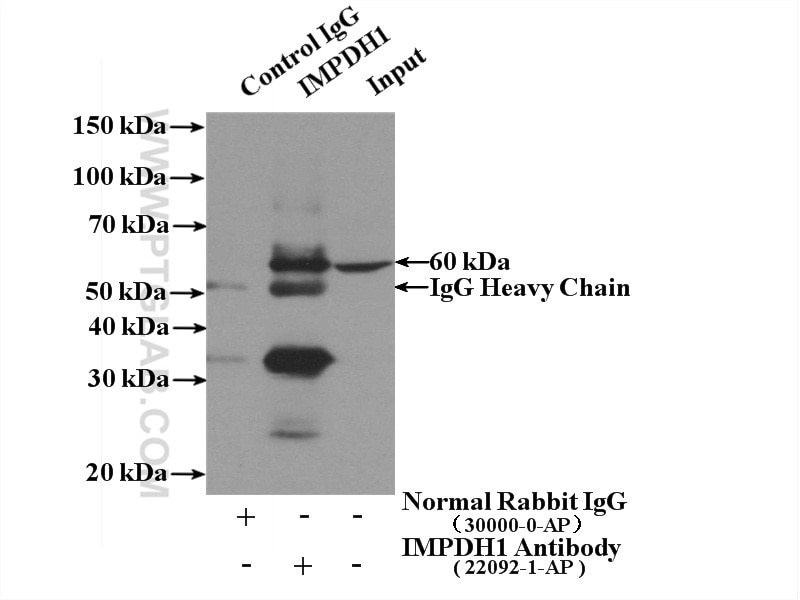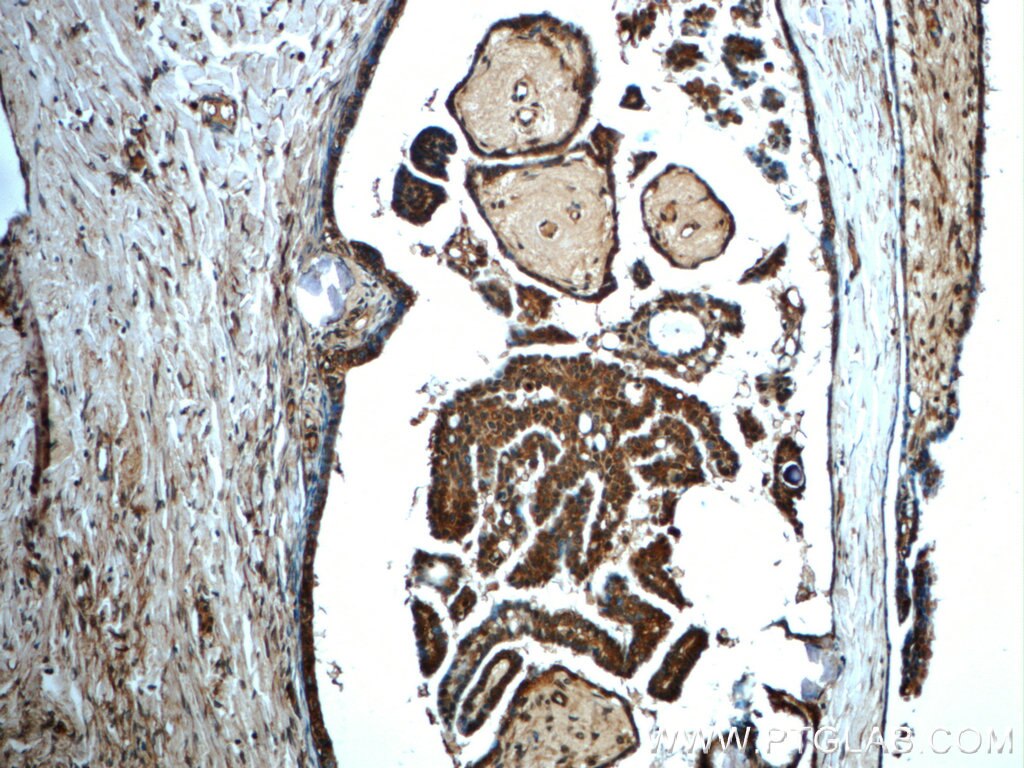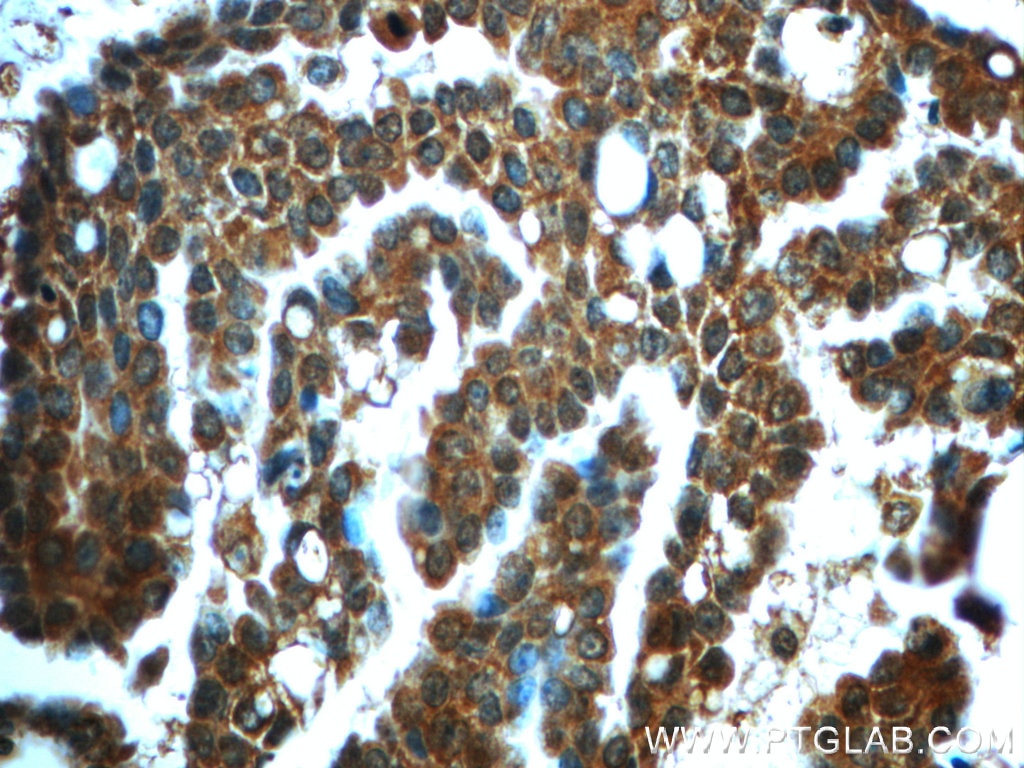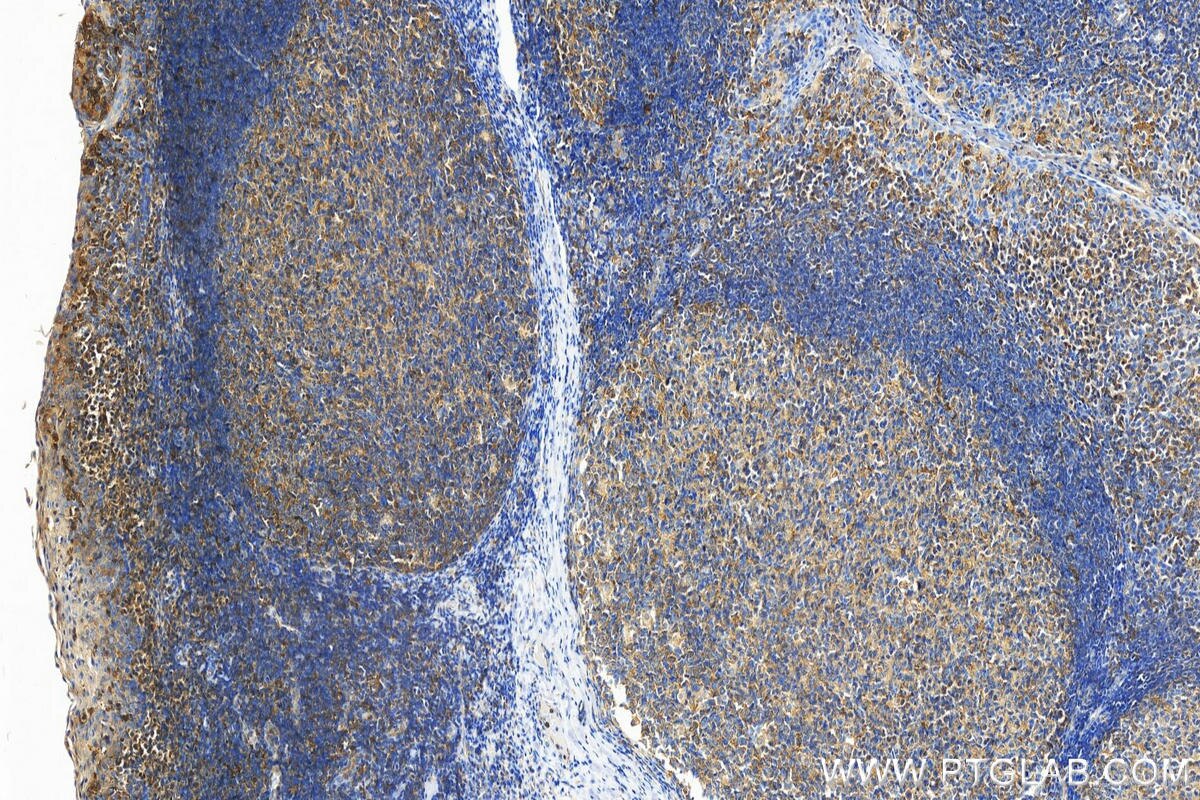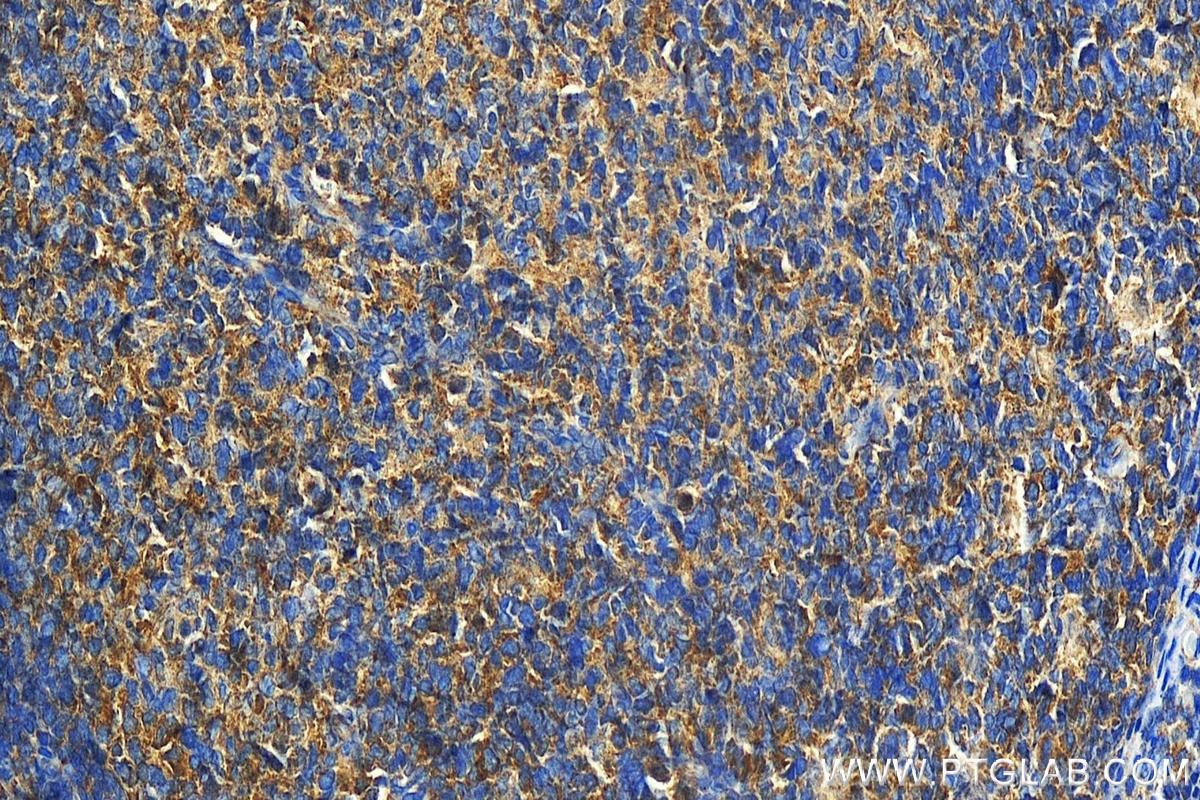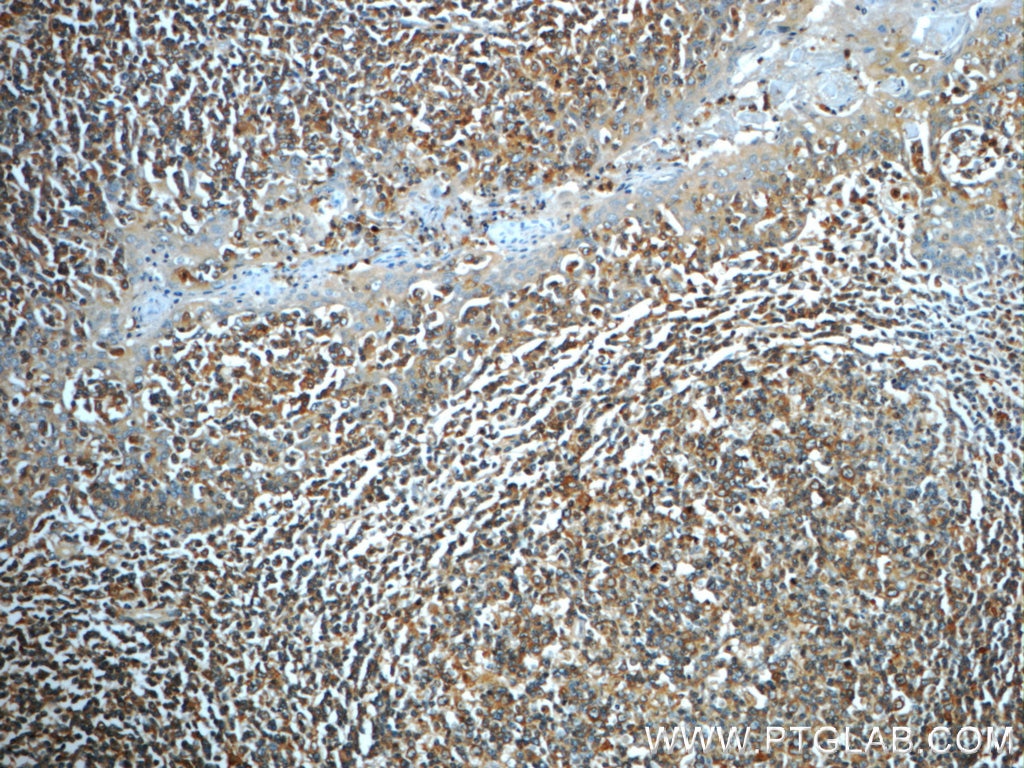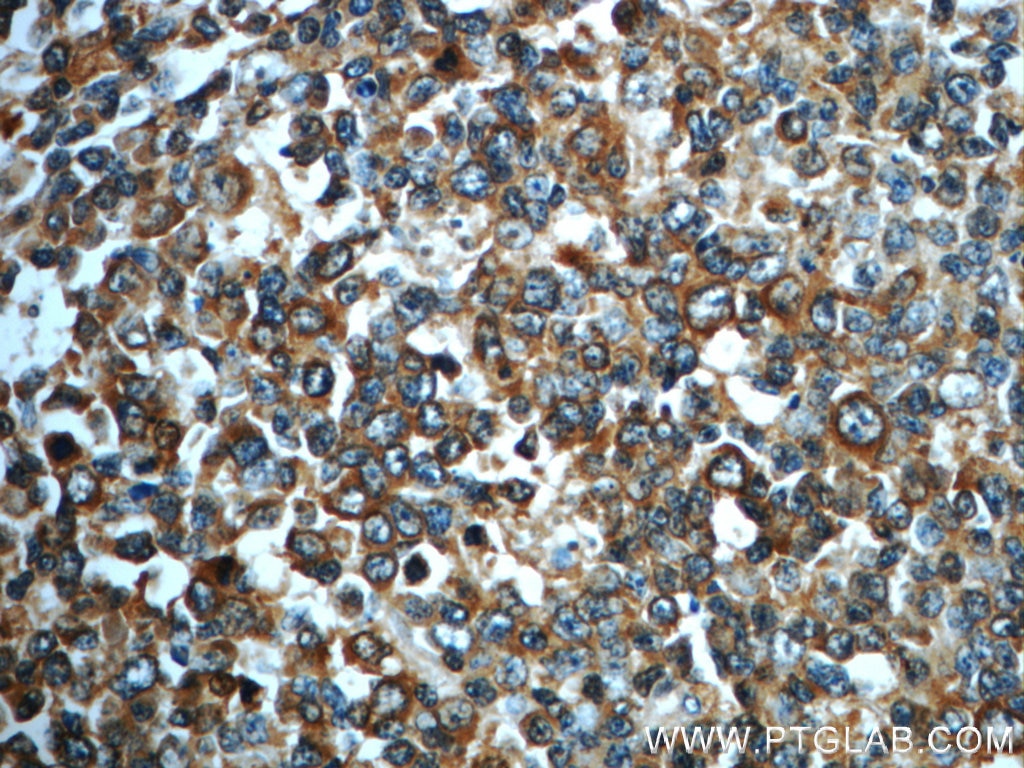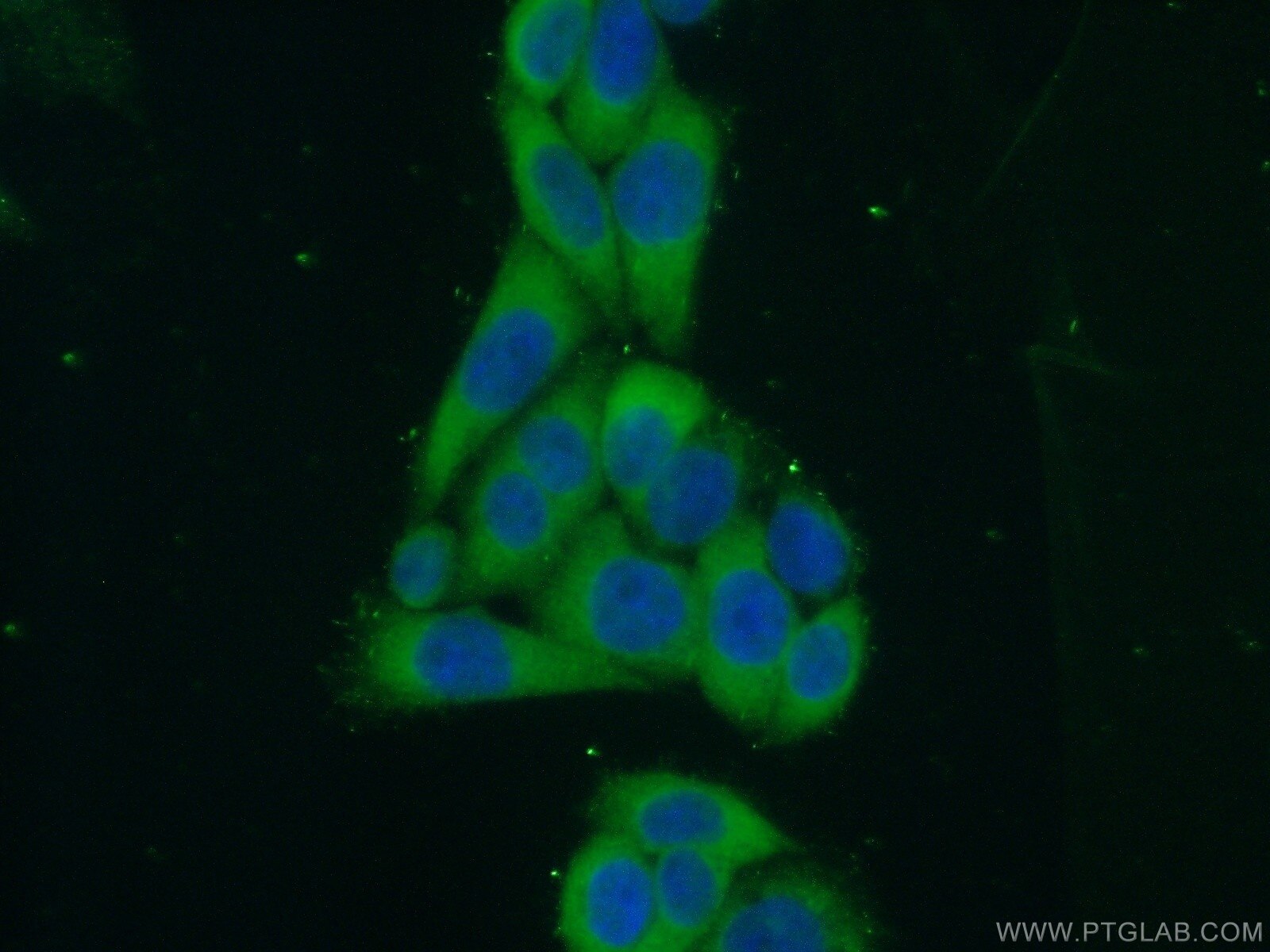- Phare
- Validé par KD/KO
Anticorps Polyclonal de lapin anti-IMPDH1
IMPDH1 Polyclonal Antibody for WB, IHC, IF/ICC, IP, ELISA
Hôte / Isotype
Lapin / IgG
Réactivité testée
Humain, rat, souris
Applications
WB, IHC, IF/ICC, IP, ELISA
Conjugaison
Non conjugué
N° de cat : 22092-1-AP
Synonymes
Galerie de données de validation
Applications testées
| Résultats positifs en WB | cellules HeLa, cellules A431, cellules K-562, cellules Raji, tissu splénique de rat, tissu splénique de souris |
| Résultats positifs en IP | cellules HeLa, |
| Résultats positifs en IHC | tissu d'amygdalite humain, tissu de tumeur ovarienne humain il est suggéré de démasquer l'antigène avec un tampon de TE buffer pH 9.0; (*) À défaut, 'le démasquage de l'antigène peut être 'effectué avec un tampon citrate pH 6,0. |
| Résultats positifs en IF/ICC | cellules HeLa |
Dilution recommandée
| Application | Dilution |
|---|---|
| Western Blot (WB) | WB : 1:1000-1:6000 |
| Immunoprécipitation (IP) | IP : 0.5-4.0 ug for 1.0-3.0 mg of total protein lysate |
| Immunohistochimie (IHC) | IHC : 1:800-1:3200 |
| Immunofluorescence (IF)/ICC | IF/ICC : 1:20-1:200 |
| It is recommended that this reagent should be titrated in each testing system to obtain optimal results. | |
| Sample-dependent, check data in validation data gallery | |
Applications publiées
| KD/KO | See 3 publications below |
| WB | See 14 publications below |
| IHC | See 4 publications below |
| IF | See 5 publications below |
| IP | See 1 publications below |
Informations sur le produit
22092-1-AP cible IMPDH1 dans les applications de WB, IHC, IF/ICC, IP, ELISA et montre une réactivité avec des échantillons Humain, rat, souris
| Réactivité | Humain, rat, souris |
| Réactivité citée | Humain, souris |
| Hôte / Isotype | Lapin / IgG |
| Clonalité | Polyclonal |
| Type | Anticorps |
| Immunogène | IMPDH1 Protéine recombinante Ag17297 |
| Nom complet | IMP (inosine monophosphate) dehydrogenase 1 |
| Masse moléculaire calculée | 563 aa, 60 kDa |
| Poids moléculaire observé | 53-60 kDa |
| Numéro d’acquisition GenBank | BC033622 |
| Symbole du gène | IMPDH1 |
| Identification du gène (NCBI) | 3614 |
| Conjugaison | Non conjugué |
| Forme | Liquide |
| Méthode de purification | Purification par affinité contre l'antigène |
| Tampon de stockage | PBS with 0.02% sodium azide and 50% glycerol |
| Conditions de stockage | Stocker à -20°C. Stable pendant un an après l'expédition. L'aliquotage n'est pas nécessaire pour le stockage à -20oC Les 20ul contiennent 0,1% de BSA. |
Informations générales
IMPDH1(Inosine-5'-monophosphate dehydrogenase 1) is also named as IMPD1, IMP dehydrogenase 1 and belongs to the IMPDH/GMPR family. It catalyzes the rate limiting step of de novo guanine synthesis and an important target for the development of drugs with both chemotherapeutic and immunosuppressive activity. It may also have a role in the development of malignancy and the growth progression of some tumors. This protein has some isoforms produced by alternative splicing with the molecular mass of 53-65 kDa. This antibody may has cross reaction with IMPDH2 due to their high homology.
Protocole
| Product Specific Protocols | |
|---|---|
| WB protocol for IMPDH1 antibody 22092-1-AP | Download protocol |
| IHC protocol for IMPDH1 antibody 22092-1-AP | Download protocol |
| IF protocol for IMPDH1 antibody 22092-1-AP | Download protocol |
| IP protocol for IMPDH1 antibody 22092-1-AP | Download protocol |
| Standard Protocols | |
|---|---|
| Click here to view our Standard Protocols |
Publications
| Species | Application | Title |
|---|---|---|
Mol Cell ERK2 Phosphorylates PFAS to Mediate Posttranslational Control of De Novo Purine Synthesis. | ||
Mol Ther IMPDH1/YB-1 Positive Feedback Loop Assembles Cytoophidia and Represents a Therapeutic Target in Metastatic Tumors.
| ||
J Oncol The Role of Purine Metabolism-Related Genes PPAT and IMPDH1 in the Carcinogenesis of Intrahepatic Cholangiocarcinoma Based on Metabonomic and Bioinformatic Analyses
| ||
Cells Distinct Classes of Flavonoids and Epigallocatechin Gallate, Polyphenol Affects an Oncogenic Mutant p53 Protein, Cell Growth and Invasion in a TNBC Breast Cancer Cell Line. | ||
Int J Biochem Cell Biol Characterisation of inosine monophosphate dehydrogenase expression during retinal development: differences between variants and isoforms. | ||
Clin Chem Lab Med Reference standards for the detection of anti-mitochondrial and anti-rods/rings autoantibodies. |
Avis
The reviews below have been submitted by verified Proteintech customers who received an incentive for providing their feedback.
FH Alexios (Verified Customer) (09-17-2025) | Immunofluorescence staining of iPSCs with IMPDH2 antibody showed a robust signal present in nearly all cells at 60× magnification, perinuclear. The distribution appeared consistent across the culture and aligned with patterns observed in other tested cell lines, supporting the specificity of the antibody signal.
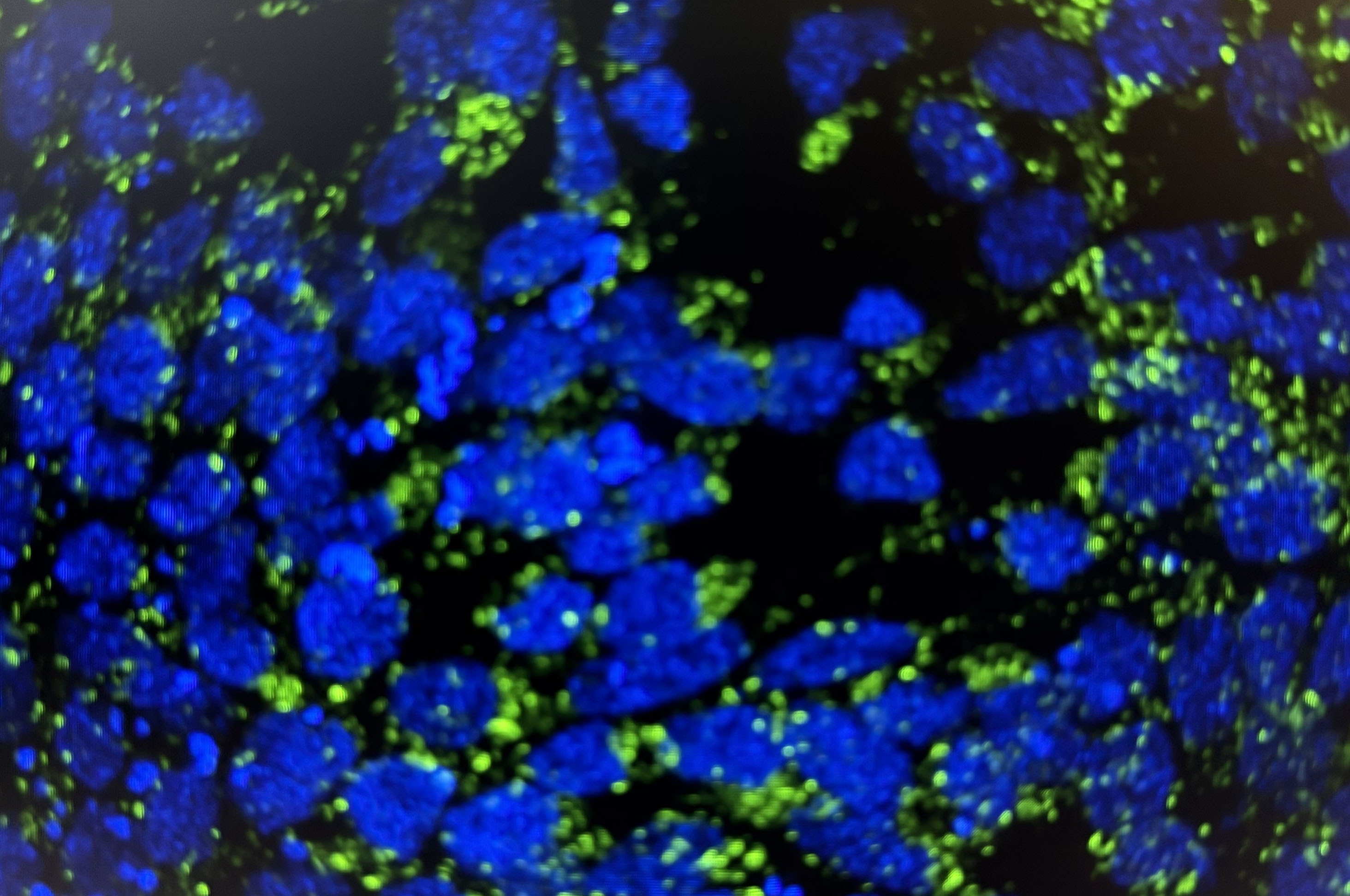 |
